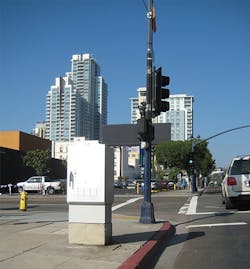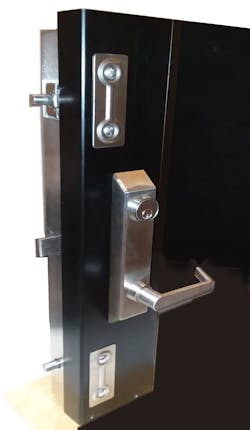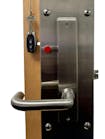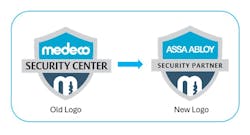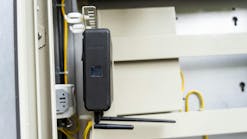It’s well-established in the security industry that a higher security product or system carries a higher price.
With respect to selling high-security keyways and locking systems, a locksmith has to consider standard questions that are relevant for any market: Does your investment in tooling, training, time, franchise fees and stock produce more profit than other available options? Each market has a different answer and a different sales process.
As far as mechanical high-security systems, conventional wisdom has focused largely on pick and tamper resistance, plus patented keys. Bumping has been much discussed in recent years, and even budget residential locks now incorporate bump-resistant technology. Dozens of YouTube videos teach the fundamentals of bumping and picking, and the public is acutely aware of these potential threats.
But, in reality, high-security systems aren’t necessary in many applications. Your job as the security pro is to help the customer understand their actual vulnerabilities and recommend layers of cost-effective solutions that you can provide.
This article explores specific markets that are suited to high-security locks, as well as things you should consider. Finally, we’ll discuss effective selling strategies.
Potential Markets
The BHMA/ANSI A156.30 standard issues this warning: “Lock and door assemblies take the grade of the lowest graded component, including ungraded pieces.” In other words, it doesn’t make sense to put a high-security lock on a door until you first beef up the hinges, frame and possibly door itself.
So, targeting residences or multitenant housing makes little sense, because they tend to be more vulnerable to operator error, such as unlocked doors or windows, as well as brute-force attacks. Remember, bump and picking tools rarely are found on experienced burglars for several reasons:
- Manipulation leaves the burglar exposed for too long.
- It’s the slowest way in.
- The tools guarantee arrest if they’re stopped. The proliferation of doorbell cameras in recent years makes lock-picking even more risky.
Government, military and defense agencies are far better markets for high security because of the high value of the information that makes them targets for espionage and surreptitious entry. The same goes for hospitals that have extensive high-value records. These organizations tend to have extensive layered security protocols. The layers include guards, cameras, solid internal key control, electronic access control and even artificial-intelligence analytics. These are good markets for high-security locks as one of the multiple layers.
The next market is the small- or medium-business (SMB) sector. This can include retail, pharmacies, service providers, wholesalers, food service, vending and cannabis shops. The latter has some special requirements, while Medeco and CyberLock have solid vending-machine solutions.
SMB attacks tend to target materials, tools, equipment and information. You likely will be called on to defend job-site equipment and other SMB assets. Unguarded job sites are susceptible to extended attack. Bolt cutters, carbide saws and crowbars are favorite attack tools rather than picks. For example, one of my customers had a concrete-block wall sawed through by a K12 carbide saw. Although there might be time to pick a lock, it’s the slowest and least reliable method. It’s better first to harden the site, while allowing external observation.
The cannabis market presents some interesting opportunities for high-security systems. The merchandise is particularly attractive to burglars for the currency and personal-use value. In fact, the desire for drug money often is a prime burglary motivation. These shops are regulated heavily and will have cameras, alarms and heavily reinforced doors. These shops generally are willing to spend more for pick and tamper resistance, as well as patented keys.
Securitech has been the go-to supplier of extreme-duty lock assemblies for the industry. The self-locking Auto-Bolt multipoint deadbolt is popular for storage vaults or secure areas that require self-latching and locking.
Cost of Entry
The simple fact of the security industry is that high security has a higher cost of entry. Many lockshops have favorite high-security brands that provide solid Grade 1 deadbolts. However, unless you’re defending nuclear weapons or national secrets, any UL437-rated lock will provide more defeat resistance than your customer likely will require. Patented keys can be a selling point when the owner has a key-duplication problem or is concerned about preventing extra copies from being made and distributed in the future.
It’s important to remember that selling high-security systems also might require a key machine that can cut these keys, and specialty key cutters that can handle this run in the thousands of dollars. (Patented key systems also are costly.) As with any new product line, keep your potential audience in mind at all times with respect to a potential high-security investment. Budget the cost of a specialty key cutter: How many high-security locks would you have to sell, and at what net profit, before the key cutter is paid off?
And remember the role of electronics. If your customer has an electronic lock, make sure the cylinder, deadbolt and housing are solid and reasonably defeat-resistant for the application and neighborhood.
Making the Sale
“We are living in a ‘golden age’ of locking innovations,” according to Securitech President Mark Berger. “Residential quotes can be off the cuff, but more-complex proposals really need a quality, typed presentation.”
Burger has identified a critical component of the marketing mix: If you expect the customer to spend more money, you have to balance the increased cost with increased value — and you have to look the part.
Make yourself and your presentation look professional. Your printer and word processor can create really nice presentations that include appropriate fonts, formatting, logo and inserted pictures. Break out each component with materials and labor listed so they can see what each item costs. Be sure to review a hard copy before sending. It’s amazing how many errors you will find.
During the meeting, your customer won’t hear a word of your presentation unless they believe you really understand their requirements. Listen carefully, take notes and then repeat the issues back to the customer. They’ll know you really understand the issues.
Commercial businesses also require a site visit. You’ll discover multiple vulnerabilities and service opportunities you can address. While you’re there, a free closer adjustment helps to build confidence.
Propose realistic solutions. Recommend beefing up hinges, strikes and other points of entry before a high-security system. My favorite story was the small-business owner who made it easy for burglars to get in through a skylight, but double-keyed deadbolts made it impossible to leave. Then they heard the guard dog.
Provide an organized list of vulnerabilities, with solutions and budgets for each item. The owner then can make their own evaluation of which items to address first and which to budget for later. Your objective is to allow the customer to have confidence that you’re there to solve their problem. That’s how you build long-term loyalty — and a solid business.
Cameron Sharpe, CPP, worked 30 years in the commercial lock and electronic access industry. [email protected]
Cameron Sharpe
Cameron Sharpe, CPP, worked 30 years in the commercial lock and electronic access industry. Contact him at [email protected].

